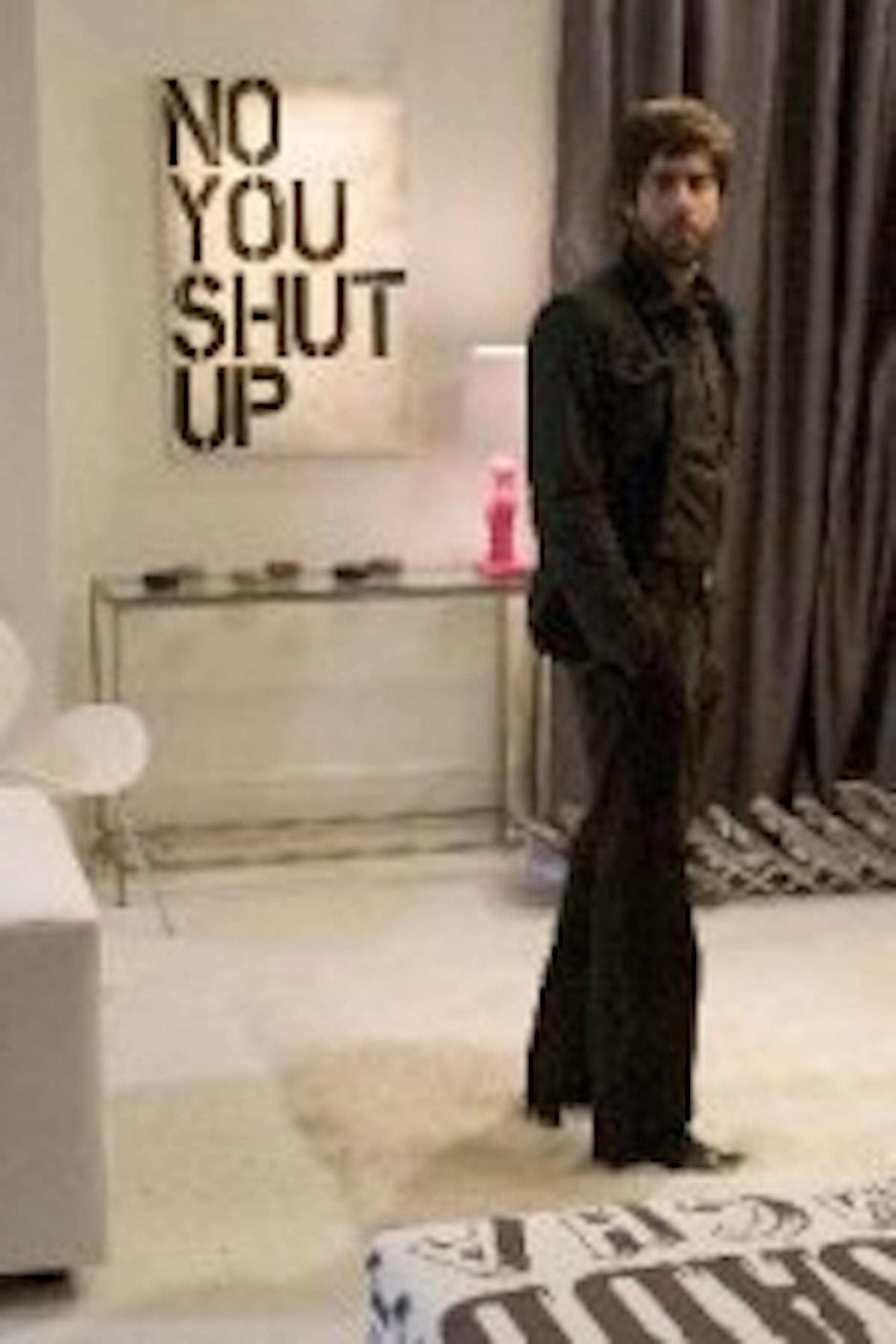(Untitled)' paints snide portrait
When it comes to art, I am one of the unenlightened. If you try to talk to me about Rembrandt, I'll just go on a tirade about why I prefer Colgate (I feel very strongly about teeth whitening products). The only reason I know anything about Van Gogh is because I am morbidly curious about people who cut off their own extremities. And if you brought me to a contemporary art museum, I'd probably spend 90 percent of our trip proclaiming in a very loud and embarrassing manner: "You call this art? Anyone and his brother could splatter paint on a canvas/pee into a bucket/freeze-dry a shark/do something else that is frequently passed off as contemporary art." So, it seemed appropriate that an artistically unaware, modern-art-mocking barbarian like myself go to see (Untitled), the new film by writers Jonathan Parker and Catherine di Napoli. (Untitled), which stars the talented likes of Adam Goldberg and Marley Shelton as eccentric artist Adrian and gallery owner Madeleine, respectively, pokes fun at the New York art scene as the film follows Adrian's attempts to further his career while carrying on a romance with Madeleine.
Unfortunately, the film puts aside plot and character development in favor of devoting the majority of its time to lampooning the art world, which makes for decent entertainment at best and for characters that are as inaccessible and static as paintings situated behind velvet ropes.
In regard to the former point, (Untitled)'s treatment of the artistically oriented ranges on the satire spectrum from being clever to being heavy-handed, but it more often nears the latter: There are no redeeming figures in (Untitled), but rather only a collection of over-the-top, borderline psychotic stereotypes (Adrian describes one artist's potential as being more in the realm of serial killing than creating art) with delusions of grandeur.
It's difficult to like such characters as is, but it's even more difficult when the only side of the characters the audience sees is the gallery-worthy public persona: Even when they're alone, characters never reveal any kind of motivation or depth, and, what's worse, the artists never undergo any growth. By the film's end, when you want to see Adrian and company creating the emotional equivalent of the Mona Lisa, they're still scribbling portraits not fit for the refrigerator.
But (Untitled) dedicates just as much time to mocking the art market's outsiders, as well, and the end result is that certain portions of the film feel mean----spirited. To elaborate: Madeleine frequently takes advantage of both artists and patrons who she feels are unworthy of her gallery's contents, and at times the movie seems to justify her practices. One hapless art collector who was admitted into the art world due to newly acquired wealth, for example, is frequently portrayed as buffoonish and is only allowed to purchase pieces after being cajoled into funding Madeleine's latest project. The ultimate result is a depressing character reminiscent of the whipping boy in one of your high school's cliques.
And (Untitled)'s progression is as jarring as the sound made by a man kicking a bucket at a contemporary music concert. Essentially, the movie feels as though someone followed Adrian and Madeleine for several months to a year taking photographs and then picked at random 10 or so snapshots to represent that entire year. Thus, when Adrian and Madeleine go from acquaintances to adoring lovers to arguing artists within the span of half an hour with little dialogue in between to explain each transition, it makes for a film that feels like an unfinished portrait.
(Untitled) does feature a noteworthy, incredibly original method of characterization, however. The musician Adrian, despite possibly having the fewest number of lines in the entire film, is perhaps the most well developed character due to the inclusion of enhanced sound during his scenes. For example, when the film focuses on Adrian, cell phones become annoyingly loud or clothing crumples pleasantly depending on how he feels emotionally or artistically. The result is that we're given a glimpse into how the character's mind works as well as an idea of a talented man attempting to work in an intrusive, distracting world.
Ultimately, (Untitled)'s message is more mixed than the mediums at an art museum; the audience is left without any likeable personas, and it is unclear whether the filmmakers believe artists are truly excessively arrogant or whether modern man is incapable of recognizing beauty. And whether (Untitled) itself is a work of art is equally uncertain.



Please note All comments are eligible for publication in The Justice.